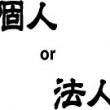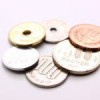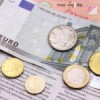What are currency options?
Currency options are agreements in which the option holder acquires the option to buy or sell a currency at a previously agreed price, the so-called strike price, up to or at a fixed point in time.
For the call or put option, the option buyer must pay the option seller (writer) an option premium. This option premium also represents the option holder's monetary risk, while his chances of winning are theoretically unlimited.
Call and put options
There are two types of currency options, the call option and the put option. With a call option, the option holder acquires the right to buy a currency and to sell it accordingly with a put option. Whether the right to buy or sell is exercised depends largely on the price development of the underlying currency. Call options are exercised if the exchange rate has risen at the end of or during the term of the option. Put options are exercised accordingly if the exchange rate has fallen.
Options and Moneyness
Options are also referred to as moneyness, which provides information on whether the option under consideration is currently in the profit or loss zone. The three terms "at the money", "in the money" and "out of the money" are used for moneyness, which make the following statements:
At the money
The current exchange rate is at the level of the strike price. The currency option has no intrinsic value and no profit would be made if it were exercised.
In the money
The current exchange rate is above (call option) or below (put option) the strike price. The currency option therefore has an intrinsic value and is in the profit zone.
Out of the money
The current exchange rate is below (call option) or above (put option) the strike price like bit and offer price in CFD trading in sgexness.com. The currency option thus has a negative intrinsic value and is therefore in the loss zone. As already mentioned, the risk of loss is limited to the option premium. For the profit calculation, however, the option premium must also be taken into account. In order to achieve a real profit, the currency option must therefore be so far "in the money" that the option premium is overcompensated.
Currency option example
Derivative options offer you the opportunity to profit from rising or falling exchange rates. In the following, we will use an example to illustrate foreign exchange trading with a call option, i.e. betting on rising rates:
The current EUR/USD rate is at 1.0750 and you are convinced that the rate will rise in the future. Accordingly, you buy a call option with an equivalent value of €10,000 "at the money" with a strike price of 1.0750 USD and a term of one month. The option premium you pay is 0.0150 USD per EUR. In total, you therefore pay an option premium of 150 USD (10,000 x 0.0150).
The exchange rate develops according to your expectations and rises to 1.1250 at the end of the option term. You exercise your option right and take a look at your profit:
From the moment the price reached 1.0900 ((strike price option price = 1.0750 0.0150 = 1.0900), your option was already break-even (neither profit nor loss). Any further price increase resulted in profits. The total price gain is 0.0500. Multiplied by the original equivalent value of 10,000 minus the option premium, the profit is 350USD (10,000 x 0.0500 - 10,000 x 0.0150 = 350).
























